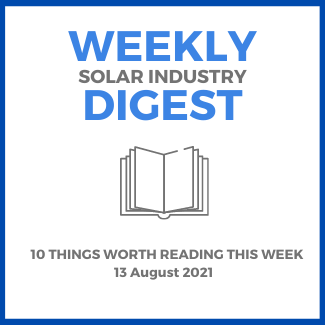Myths that often block landowners from pursuing solar farms: bankruptcy is probable (no – the utility will usually be on the hook for buying power), project owners will leave a mess (protections on this can be built into the contract), I can wait to accept a developer offer (no, you can miss the window), the land will be tied up for a long time before rent occurs (can also be addressed in contract).
To explain battery sizing and backup power to customers talk about the necessity of reducing energy demands before choosing a battery, look at the importance of electricity reserve, address misconceptions about 80% depth of discharge, and point out unexpected reasons they might need to add extra battery capacity.
The DOE’s SolarApp, the free, web-based tool meant to expedite solar permitting and lower solar costs, has been rebranded SolarApp+ cause it now includes storage systems (in the testing phase). Currently the app is only available to the public for res rooftop systems. The hope is SolarApp+ will decrease system failures due to inspection errors.
The International Flow Battery Forum symposium revealed some of the latest insights about energy storage: there is no universal energy storage solution, big and long-duration storage are the waves of the future, California continues to lead the way and take action in storage, the word on the solid performance of flow battery tech should get out more.
SPW traces the path that brought the industry to the point where China utterly dominates panel manufacturing. Among other things they discuss SolarWorld’s move to push the govt to ban China dumping cheap panels in 2011 and the resulting trade battle with China that created a deflated panel manufacturing market in the US.
In response to the report from the UN Intergovernmental Panel on Climate Change that confirmed that global warming is being caused by emissions from human activities, renewables advocates warned that global warming heralds a “code red for humanity.” The CEO of the American Clean Power Association said it should drive Congress’s actions re the infrastructure bill.
Aurora has a whole series of articles they call their basics about solar. The content is helpful for installers looking to brush up (homeowner energy load profile, panel wiring, primer on C&I solar) and customers looking to get answers at all stages of the sales process (kW vs. kWh, TOU, AC vs. DC, how to read a solar spec sheet).
The DOE has awarded $45 million for work that will integrate clean energy sources to the grid and create a new $25 million public-private consortium. The effort will push forward US manufacturing of solar and electric grid tech via organizations like NREL and other labs, universities, equipment manufacturers, and utilities.
Researchers produced a GIS-based interactive map that looks at where and how much solar is required to reach 50% of the energy demands for each state. The map revealed that there is usable land for development in every state, and that building footprints and rights-of-way for high-voltage power lines are needed to supply the required space.
Long-duration battery energy storage system developer Ambri has secured $144 million to commercialize its calcium-antimony liquid metal battery chemistry and create manufacturing facilities to offer projects starting next year. They’ve also created an agreement with Perpetua Resources to lock in a domestic source of antimony for their supply chain.


